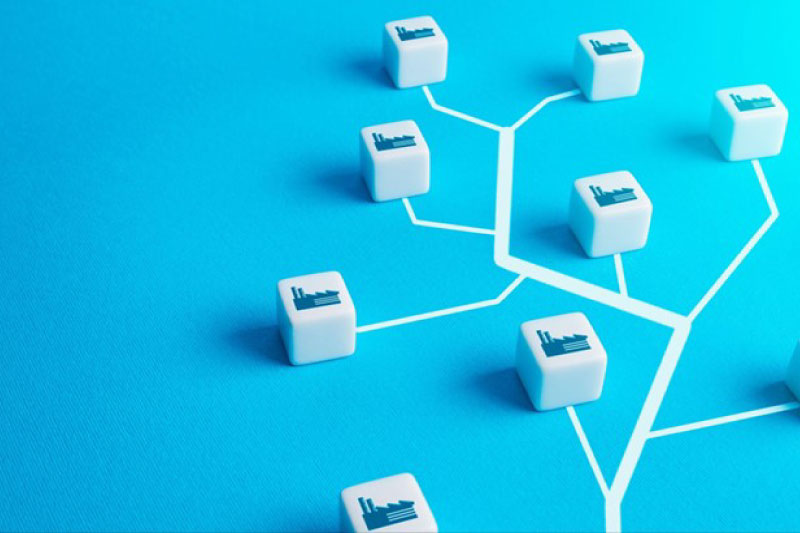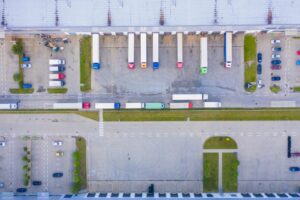Real-time Location Systems (RTLS) are ushering in transformative changes across industries worldwide by offering unparalleled visibility into the movement and status of assets, people, and equipment. In this blog post, we delve into the most recent developments in the RTLS arena and the promising growth forecasts that underscore its significance in the coming years.
Table of Contents
RTLS Market Growth Projections
A recent report suggests that the RTLS market is on the cusp of substantial expansion in the next decade. An anticipated Compound Annual Growth Rate (CAGR) of 23.2% is forecasted between 2022 and 2032. This robust growth projection highlights the escalating demand and broad adoption of RTLS solutions across various sectors. As enterprises increasingly acknowledge the transformative capabilities of RTLS — particularly in streamlining operations and achieving real-time oversight — the market stands poised to burgeon, paving the way for innovative solutions and enhanced efficiencies in the years ahead.
How the Healthcare Sector Propels Market Growth
The healthcare industry stands as a dynamic contributor to the market’s expansion, projected to grow at an impressive CAGR of 16.5% during the forecast period. Within this realm, the healthcare sector commands a significant portion of the market.
The adoption of RTLS in healthcare, especially in the United States, has played a crucial role in fueling this growth. This uptrend is supported by the escalating use of IoT devices, reflecting a transformative shift in the industry. The integration of RTLS with IoT technologies is reshaping healthcare, reinforcing its significant contribution to the expanding real-time location systems market.
Surging RTLS Adoption in the US
The RTLS demand in the United States is anticipated to capture a considerable market share, estimated at 17.8%. This growth is primarily driven by the healthcare sector’s substantial need for RTLS solutions. Hospitals and healthcare facilities nationwide are adopting RTLS technology for various applications, further boosting the RTLS market’s rise. This momentum in the healthcare industry is a testament to the burgeoning RTLS market in the United States.
Escalating Demand for RTLS Systems in Germany
Germany’s RTLS market is positioned to contribute an estimated 15.3% to the overall European market share. The nation’s diverse industrial landscape, which includes the manufacturing and automotive sectors as well as other tech-driven industries, underpins the growing demand for RTLS. Several elements, notably Germany’s standing as Europe’s largest economy and its vast population, converge to fortify the market for real-time location technologies.
Rapid RTLS Growth in India
India’s potential in the RTLS market can be estimated at around 17.8% of the Asia-Pacific share. With a burgeoning IT sector and an expanding healthcare industry, the demand for RTLS is on a notable rise. The country’s vast population and its drive towards digitalization amplify the need for advanced location tracking solutions, making it a promising market for RTLS adoption.
Australia’s Evolving RTLS Scenario
Australia is expected to contribute around 18.3% to the Oceania region’s RTLS market share. Its growing healthcare, mining, and logistics sectors underscore the burgeoning demand for RTLS. The country’s vast geography and its push towards technological innovation amplify the relevance and need for real-time location tracking solutions.

The Current State of RTLS to Each Industries
Healthcare RTLS Market: Improving Care and Efficiency
Within the healthcare sector, RTLS plays a pivotal role in saving lives and enhancing patient care. Hospitals utilize RTLS to track the whereabouts of medical equipment, patients, and staff. For example, it can help quickly locate a critical piece of equipment like a defibrillator in a life-or-death situation or ensure that patients are seen promptly by the right medical staff. The global healthcare RTLS market is anticipated to see continued growth as more hospitals realize its value.
Manufacturing RTLS Market: Optimizing Operations
Within the healthcare sector, RTLS plays a pivotal role in saving lives and enhancing patient care. Hospitals utilize RTLS to track the whereabouts of medical equipment, patients, and staff. For example, it can help quickly locate a critical piece of equipment like a defibrillator in a life-or-death situation or ensure that patients are seen promptly by the right medical staff. The global healthcare RTLS market is anticipated to see continued growth as more hospitals realize its value.
Energy RTLS Market: Enhancing Safety and Operational Efficiency
Safety holds a primary focus in the oil, gas, and mining industries. RTLS provides essential insights to ensure the safety of workers and optimize operational procedures. For instance, it can be used to track miners’ locations in underground tunnels or monitor the movement of equipment on a busy oil rig. The ability to prevent potential hazards and respond quickly to emergencies can save lives and reduce downtime. As the industry looks for ways to increase efficiency and safeguard its workforce, the adoption of RTLS is expected to surge.
Supply Chain and Logistics RTLS Market: Refining Visibility and Coordination
In the world of supply chain and logistics, real-time tracking is indispensable. RTLS helps firms gain unparalleled visibility into their inventory, ensuring timely deliveries and reducing holding costs. For example, by using RTLS, distribution centers can seamlessly locate products within vast warehouses, making the order fulfillment process swifter. As the demands on global supply chains grow, the use of RTLS in refining coordination and streamlining operations is set to see considerable expansion.
RTLS Market Growth Projections
The RTLS market has been on an upward curve in recent years, and several indicators suggest this trend will persist:
- Increased Adoption Across Industries: The diverse applicability of RTLS solutions, from healthcare and manufacturing to logistics and retail, ensures a broadening adoption spectrum.
- Technological Advancements: Ongoing enhancements in RTLS technologies bolster their accuracy, reliability, and affordability. These factors facilitate a more compelling case for businesses to integrate RTLS systems.
- IoT Integration: The intertwining of the Internet of Things (IoT) with RTLS fosters seamless data exchange and scrutiny, heralding new avenues for automation and refinement.
- Increased Demand for Safety and Security: In today’s world, the emphasis on worker safety and security is unparalleled. This is especially resonant in sectors like healthcare and defense, where precise locational data can be the difference between life and death and where asset tracking is indispensable for seamless operations.

Potential Issues Affecting the Growth of the RTLS Market
The RTLS market promises immense growth potential; however, it is not without challenges. Potential hurdles to its expansion include:
- High Initial Costs: The adoption of RTLS involves substantial expenditures, encompassing hardware, software, and infrastructural costs. Such steep initial investments might deter smaller enterprises, potentially capping market growth.
- Operational Challenges: Successful RTLS deployment demands meticulous planning and setup to ensure pinpoint tracking. Factors like signal interference, calibration issues, and routine maintenance could stymie adoption.
- Privacy Concerns: Gathering and employing location data invoke privacy concerns. Balancing efficiency-driven tracking with respect for individual privacy remains a formidable challenge, especially in sensitive domains like healthcare.
- Data Security: Given that RTLS systems amass and relay sensitive location details, data security becomes paramount. Security breaches or unauthorized intrusions can undermine trust and dampen market adoption.
- Integration Complexity: Meshing RTLS technology with prevailing systems can be intricate. Potential compatibility roadblocks and the necessity for bespoke customizations might decelerate adoption rates.
- Lack of Standardization: Absence of standardized protocols in the RTLS domain introduces a spectrum of technologies, complicating the decision-making process for businesses and potentially inhibiting market growth.
- Regulatory Compliance: Industries like healthcare and finance, governed by stringent data and security regulations, find compliance adherence both intricate and resource-intensive, which could affect RTLS adoption.
- Limited Accuracy in Certain Environments: RTLS might falter in delivering exact location data in challenging terrains such as urban jungles, subterranean facilities, or high-interference zones.
- Resistance to Change: An inherent aversion to technological evolution in some enterprises, rooted in a preference for age-old methods, can pose obstacles to RTLS adoption.
- Environmental Impact: Environmental repercussions stemming from the production and disposal of RTLS hardware might sway future regulations and purchase choices.
- Competing Technologies: RTLS contends with evolving alternatives like GPS and RFID, both of which are expanding their indoor location services.
- Global Economic Factors: Economic lulls or downturns can skew priorities, prompting businesses to channel resources towards cost-saving rather than investing in emergent tech like RTLS.
- Supply Chain Disruptions: Unforeseen supply chain disturbances, reminiscent of those during the COVID-19 pandemic, can hamper the timely delivery and availability of RTLS essentials.
- Market Fragmentation: A plethora of providers with diverse solutions typifies the RTLS market. This dispersal can sow confusion among prospects, potentially necessitating market consolidation for sustained growth.
For the continued growth and assimilation of RTLS technology, it’s imperative that businesses and RTLS vendors proactively confront these challenges. Addressing the multifaceted concerns of cost, privacy, security, and standardization positions the industry optimally for widespread adoption across sectors.

The Future of the RTLS Market
The global RTLS market is influenced by various factors, including the escalating demand for asset tracking, the ubiquitous use of smartphones, the growing embrace of business analytics, and the adaptability of RTLS applications. Technological breakthroughs such as cloud computing, artificial intelligence (AI), and the melding of diverse technologies into real-time location intelligence solutions offer immense opportunities.
Integration with Edge Computing
The rise of edge computing has transformed the landscape of RTLS technology. By facilitating data processing at its source, edge computing minimizes latency and augments real-time analytics capabilities. For RTLS, this translates to swift local processing of location data from tags or sensors, heralding quicker response times and heightened efficiency. Edge computing also fortifies data privacy and security since sensitive data remains ensconced within secure confines. Moreover, it enhances scalability, energy conservation, and robustness — attributes that render it an impeccable ally for RTLS solutions. This synthesis empowers sectors like healthcare, manufacturing, logistics, and smart cities to refine operations, pare down costs, and spearhead innovation in real-time tracking and decision-making.
Leveraging AI in RTLS Technology
Artificial intelligence’s expanding footprint in the RTLS realm is undeniable. Emerging trends and scholarly pursuits suggest numerous propitious advancements. The sophistication of AI algorithms is on the rise, enabling RTLS platforms to tout superior accuracy and enriched predictive analytics. Machine learning frameworks excel at deciphering intricate patterns within location data, paving the way for advanced tracking and anomaly detection. Moreover, AI-centric RTLS facilitates automation and autonomous decision-making, be it optimizing logistical pathways or dynamically reallocating resources within healthcare. The interplay of AI and RTLS is catalyzing innovation across myriad sectors, heralding enhanced efficiency, cost-effectiveness, and safety. As the AI paradigm evolves, it’s reasonable to anticipate an increasingly sophisticated and indispensable RTLS presence across industries.
The Role of Machine Learning in RTLS
The linchpin of RTLS systems is precision in location tracking and spatial discernment, a task where machine learning is pivotal. During initialization, beacons emit distinct signals, which tags subsequently capture. As tags traverse a zone, they accrue signal patterns, forging a reference dataset. This dataset primes the machine learning engine to distinguish locales such as “Room A” or “Corridor 2.” When fresh data from a tag is ingested, the engine juxtaposes it with the reference to pinpoint locations.
Much like human adaptability, machine learning thrives on variance. Its algorithms mature with augmented data influx and utilization, resulting in heightened precision. For instance, if a facility undergoes infrastructural modifications, like amalgamating two chambers, a machine learning-based RTLS can recalibrate with minimal fuss.
As the AI domain relentlessly evolves, RTLS systems harnessing an array of machine learning techniques collaborate to interpret tag data, vouching for room-level precision. When novel and more efficient machine learning strategies emerge, their integration into existing systems is smooth, bolstering performance. Given that such systems predominantly reside in the cloud, updates are both nimble and seamless, guaranteeing enhanced RTLS efficacy for businesses.
Final Thoughts
RTLS technology is becoming an integral tool across various industries, providing comprehensive insights into the movement of assets, people, and equipment. Projections suggest significant growth in the demand for RTLS solutions from 2022 to 2032, especially in sectors such as healthcare, manufacturing, oil, gas, mining, supply chain, and logistics. The US, Germany, and China are emerging as key markets, reflecting a notable uptick in their demand for such solutions.
However, the growth of the RTLS market may face hurdles. These include high initial costs, operational challenges, privacy and data security concerns, integration complexities, a lack of standardization, and regulatory compliance requirements. Despite these challenges, the evolution of edge computing and AI holds the potential to refine the accuracy of RTLS and introduce enhanced analytics and automation across multiple fields.
Litum is spearheading this RTLS metamorphosis. Addressing market challenges and meeting global demand, we provide reliable RTLS solutions to over 50 countries. Our technology focuses on safety, operational efficiency, and delivering valuable operational insights across a broad spectrum of industries.
Curious about the potential of RTLS in enhancing your operational landscape? Contact Litum today.



